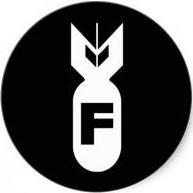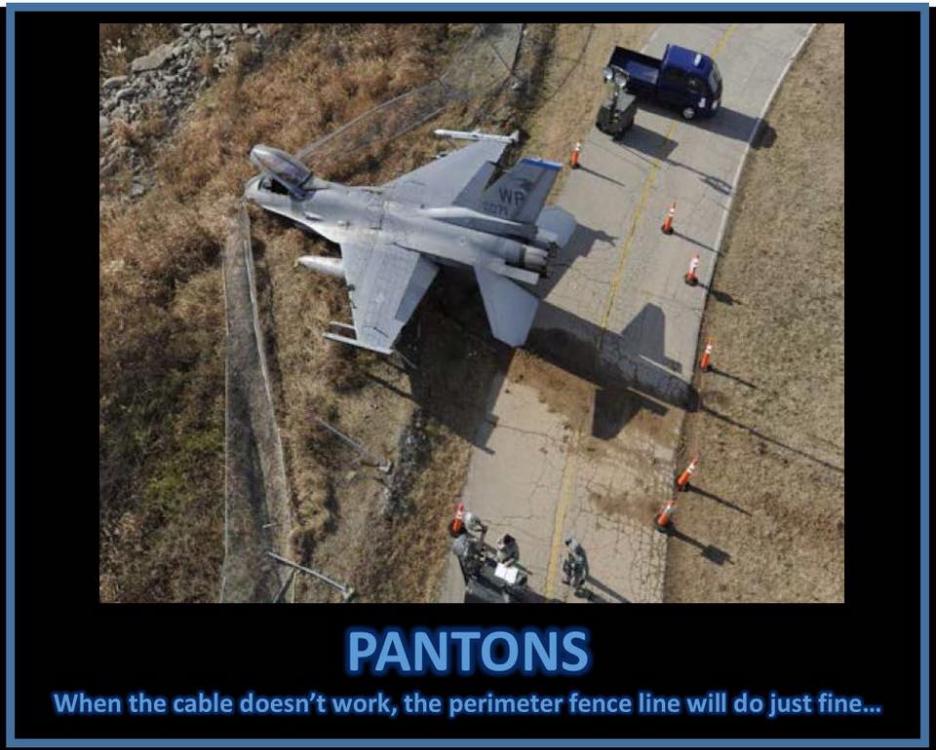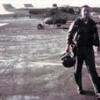Leaderboard
Popular Content
Showing content with the highest reputation on 08/27/2016 in all areas
-
I agree with everyone here saying dudes should go for it if flying a fighter/bomber is what they've always wanted. But, the "negative" queep job/career stuff laid out here will most likely be reality for the majority. Doesn't matter if they don't give a shit about strats, that's not going to be enough to keep them flying and out of non-fighter/bomber flying gigs, staff, guess who's going to suck up the random deployment to ballsjerkistan, etc. Bottom line, they'll be competing on the VML with peers who are lightyears ahead of them - its not rocket science to see they'll most likely get the left overs. Dudes considering this crossover should be prepared for only one assignment while being at the OSS/Wing damn near the entire time. And for those who it works out for and they continue on in the CAF/avoid the avalanche of bullshit, great for them, but that should not be the expectation going in. On another plus side, IFF/B-Course/MQT will give them a solid 1-1.5 years of nearly zero queep and only focused on tactics, which will certainly be a welcomed break.3 points
-
Not really a "nomination process", nor do you "meet" the TRB. Typically, when it's your turn, it's your turn. TRBs happen about once a month in the squadron, chaired by the DO, and any available instructor attends. There, they review pilots in the hopper for upgrade and examine prerequisites (GRACC, coloring book, hours, etc.) and then they basically ask for any feedback (positive or negative) suggesting they should accelerate or slow-roll said individual. Nothing incredibly formal behind it. There is a "certification board" that happens after your aircraft commander upgrade chaired by the squadron commander and usually attended by the DO and representatives from stan/eval, training, and safety. It's a 10-min meeting where they basically remind you of your responsibility, trust placed in you as an AC, and current squadron philosophies (i.e., "first phone call home wins" and all of that other risk-averse stuff these days). After that, the squadron Letter of Xs (certification tracker) is updated and you're on your way doing the Lord's work.2 points
-
MAF guys coming to the CAF? I can't speak for everyone, but as for ME, I'm really looking forward to all those esprit-de-corps building MAF squadron traditions they'll certainly bring with them to my squadron. Wheeeee...can't wait.2 points
-
In my C-130 squadron the TRB for AC was more of a "who is next" than it was a board. But that was in the time when it was 4 on 4 off in OIF and OEF so it may have changed now. If a pilot who was weak made it through AC school they usually got sent to white jets before they could deploy as an AC or were paired with the strongest copilot we had, on occasion another aircraft commander. My MC-130 squadron the TRB could be a bloodbath. I have seen several guys get delayed for AC or IP depending on what experience they had and how they good they were, or weren't.1 point
-
So what would be the difference between the dudes that would crossflow and a late rate?1 point
-
And you would have greatly regretted it. I went to SOS with BQZip ~5 years ago - his mom made the rounds. I don't know what's worse, the burning, itching, or the emotional scarring. Wait, what were we talking about again??? Oh year, switching to fighters... To sum up the thread, if your life's dream was to be a fighter pilot and you didn't get the chance for whatever reason after UPT, go for it. Just realize that you will be a part of AFPC's #s strategy and subsequently subject to all of the BS warned about in this thread. But ultimately, aren't we all just pawns in the big blue game and subjected to one shit-show or another? The only difference is the flavor of shit.1 point
-
I wouldn't call IFF/B-Course/MQT a "break." It was a good experience, but I worked my ass off.1 point
-
I'm not worried about anything. What I am saying is that these guys are not going to be expected to just be wingmen and learn the jet, which is the right way to do this. They are going to have to take jobs equal to their rank for the sake of "progression". My question for you all is why? Why would Big Blue do this? I can guarantee you it has nothing to do with "for the good of the pilot". Realistically, you are getting a 2d Lt Wingman in a Major/or soon to be. They aren't going to have the credibility to be the old guy in the squadron, so what is the best way Big Blue can use them? 11F required billets not requiring flying. Sure you will get your 200-300 hours, just in time to be an "experienced" dude. Then wham off to do all those second/third tier jobs/staff that would be wasted on dudes that have spent 4-6 more years in your Fighter. I am not trying to be Debbie Downer, but I would just say think critically about this. I am also not trying to discourage anyone. Hell, 4 years ago, I would have jumped on this like BQZip's mom. The right time to divert these guys from their MWS is not when they are mid-level/senior Capts (Which is where most of the dudes who went through UPT during the drawdown are now) but really within 2 years of them getting to their heavy MWS. So standard AF: too little. Too late.1 point
-
1 point
-
1 point
-
I had a similar problem. Short answer, you as the member can not depart your PDS until the 1st day of your DEROS month. However, there are no such restrictions on your defendants and HHG. I was stationed OCONUS with a CONUS PCS. My DEROS month was April. I wanted to leave in March, for purely personal reasons. I scheduled my HHG in early March, asked TMO to book tickets for my defendants (wife and daughter) in late March, and I left about a week later on 1 Apr. I didn't have to cite any AFIs or jump through hoops, just used plain English to explain my PFA to TMO. They did not care. YMMV. Ask nicely. The long pole in the tent is going to be getting your orders early enough to schedule HHG that far out to stay on timeline.1 point
-
1 point
-
A valid question; here's my opinion based on my involvement as an AF O-6 at NSA working airborne programs for the Asst Dep Director for Operations, Military Affairs and post- retirement as a civilian in OSD (DARO, OUSD/ISR, and NIMA/NGA)at the time The answer is that in the very early 90s, Bill Lynn, the Director of DARPA (actually named "ARPA" at that point but returned to its original title of "DARPA" later in the 90s), and Bill Perry, the DepSecDef (not sure if they were in those exact positions in the very beginning, but by mid-90s they were) believed that unmanned aircraft had the potential to revolutionize airborne operations, starting with ISR, by reducing personal exposure to threats, enabling extended ISR (long duration ops) and save money by reducing the manpower costs in the systems. Additionally, they believed that a new acquisition concept called the Advanced Concept Technology Demonstration (ACTD) could speed up the introduction of new systems from the current (in the 90s) and painful 15-20 years. The idea was to marry up the contractor side and the government side early in the development cycle to better work out operational issues while designing the vehicles (sounds good...didn't work!). They married the two ideas and DARPA initiated the High Altitude Endurance (HAE) and Medium Altitude Endurance (MAE) programs in 1994. The HAE program envisioned two platforms; a high altitude "U-2-like" vehicle and a smaller low observable, craft for better penetration of highly defended areas, referred to as "tier 2+ and "Tier 3-" in their concept terminology. The MAE program started with an existing much less capable unmanned RPA called the "Gnat", built by General Atomics for another purpose. You'll note here that this effort was a DARPA technology development effort, not an acquisition effort responding to an approved DoD mission need. In fact, the Air Force was not particularly enamored with the idea of unmanned mission aircraft and did not support the effort; there was no AF money or manning in the POM to support it. In fact the HAE program plan itself says there is only one required outcome...and let me quote from the ARPA 6 Oct 1994 ver 1.0 HAE CONOP..."A dominant objective of the HAE UAV program is to obtain the maximum capability possible for a set, non-waiverable Unit Flyaway Price (UFP); accordingly, while there are performance objectives, the only requirement that must be met is the UFP." In other words, it doesn't have to do anything except fly, hold a camera, and cost less that $10 million a copy; no operational needs have to be satisfied. To many in the system, the real effort was for DARPA to develop the new acquisition concept, using the HAE and MAE as exemplars. The AF eventually got the aircraft because the outcome of an ACTD was to be either: 1) a failed program, so cancel it, 2) showed promise, so move on and correct issues, or 3) Provide program residuals to the eventual user (AF in this case) for them to decide to either keep and operate or dump. The ARPA and SECDEF seniors decided it flew, collected something, and (sort of) met the UFP goal (at about $15.5 each), so they chose option 3 and passed it all to the AF (both HAE and MAE, although the DarkStar segment of HAE was cancelled after it crashed on flight 2. Why they kept it was the usual case of political and industrial influence, I guess. Some of us suggested the best course of action was to dump the Global Hawk because it met few operational needs, would cost too much to upgrade (if it could ever be upgraded...too little space, too little power, too little payload), and met few of the original desired capabilities, We felt it would be cheaper to take the money and start with a clean sheet design, using the knowledge gained to drive the new (unmanned) platform (which we referred to as "Global Truck"). The estimated $200-400 million extra was consider too much money by leadership, so we stay on the "cheap" track...which I suspect has cost us an extra $5-8 Billion by now (just my guess). As for the ACTD experiment, it hit a few bumps, too. When the Predator program was turned over to the AF and told to operate it, they found the DARPA program provided no money or manpower in the DoD budget to do so, no tech data was ever developed for the Service (it was all contractor proprietary) so they couldn't fix it, no ground control systems built except the contractor's test stuff so they couldn't deploy or fly it fly, No additional money was provided by DoD or Congress to the AF so the AF started a program called "Predator 911" to find money (to operate and buy support) and manpower, and facilities, "robbing" it from the current and future years budgets, causing major disruptions for years. As for GH, the idea of killing the U-2 and replacing it with the GH didn't float either, because the GH had practically no operational capability as delivered and it took a decade to develop the RQ-4B with more capability and slightly better sensors. So, that's why we have it! BTW, as far as Perry and Lynn were concerned, the success of unmanned systems since then probably indicates their vision was a success, and I can't really argue that they'd be wrong. Its all in your perspective.1 point
-
1 point
-
A tanker works with almost every other airframe/mission...fighters, bombers, paxlift/airlift, AE, AFSOC, C2/ISR, Navy, Marines, nuclear, foreign military, etc. Because of that, the missions are going to be very diverse. In one month, a crew could go from supporting a fighter exercise one week, sitting nuclear alert the next week, flying an aeromedical evac mission the week after, and then supporting up gunships to finish off the month. The tanker is actually very cheap per flight hour and has very long legs, so you get some interesting taskings that you would never expect.1 point
-
I'm not a pilot yet but this info is based on what I learned from almost exclusively rushing KC-135 and C-5 reserve units for the past few years. So the below information is from information that folks in both communities have relayed to me but not firsthand experience. A lot of the C-5 reservists seem to go on at least one 6-8 day trip a month where each leg is about 8 hours. So you're looking at quite a few stops along the way. Seems like they almost circle the globe on a trip. In 4 years I've only seen my C-5 friends go on one (volunteer) 30 day deployment. Mix this in with some local training sorties. KC-135 is sort of multi mission since it does tanker, aeromedical, and cargo. I've heard of some guys just do a lot of stateside point A to point B and back aeromedical sorties and hardly fly overseas. Some of them do just a lot of Point A to Point A local refueling sorties. I've heard of a lot of guys continuously doing 2 week long TDY's to England or somewhere and others seem to like going on their 2 or 3 month deployments back to back. Of course you can just do some combination of the above as well.1 point









